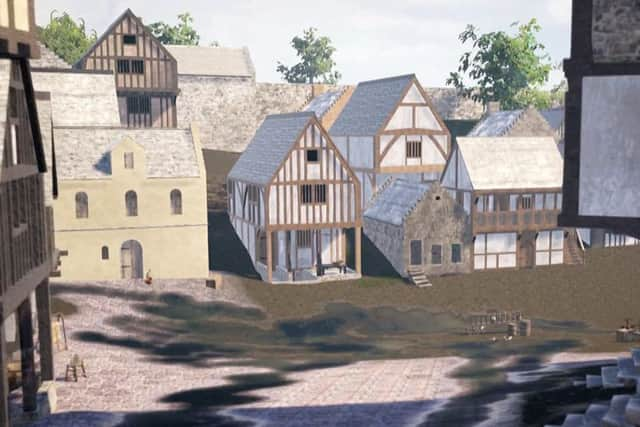Video: Experience 16th century Edinburgh
This article contains affiliate links. We may earn a small commission on items purchased through this article, but that does not affect our editorial judgement.


DOWNLOAD THE EDINBURGH EVENING NEWS APP ON ITUNES OR GOOGLE PLAY
Advertisement
Hide AdAdvertisement
Hide AdThe lost townscape of sixteenth-century Edinburgh has been brought back to life by researchers at the University of St Andrews.


The new digital reconstruction is the first to be created of the period, and is based on a drawing from 1544, thought to be the earliest accurate depiction of the capital.
An app highlighting the use of the time travelling tech will be released as an app in May – provides a unique window into the capital around the time of the birth of Mary Queen of Scots.
The new reconstruction gives an overview of the townscape of the entire sixteenth-century city, with a particular focus on the Royal Mile – the historic spine of Edinburgh.
The video flies up the High Street through the Netherbow Port - the ancient gateway into the city.


Before descending down the Z-Shaped West Bow down towards the Grassmarket. We are then treated to a bird’s eye view of the old city and can clearly make out fascinating historic landmarks such as the city walls and Greyfriar’s Kirk.
It is the result of a collaboration between St Andrews historians, art historians, computer scientists and University spinout company Smart History.
Advertisement
Hide AdAdvertisement
Hide AdThe result is an interactive tour of the capital as it appeared in 1544, just before the city was sacked and burned by an English army led by Edward Seymour, Earl of Hertford.
Dr Bess Rhodes, an expert on sixteenth-century Scottish history who collaborated on the reconstruction, said:


“For the first time visitors and residents can compare the city they know with the capital of James V and Mary Queen of Scots.
“It has been amazing seeing the recreation of a lost townscape. I hope this project makes the public more aware of the layers in the capital’s history, and furthers understanding of the complex way in which Edinburgh evolved.”
Dr Rhodes continued: “The 1540s were a tumultuous period in Edinburgh’s history. In December 1542 King James V of Scotland died, leaving his baby daughter Mary as monarch. Not long after the English King Henry VIII ordered an invasion of Scotland, with the aim of forcing the Scots to accept a proposed betrothal between the infant Mary and his young son (the future Edward VI of England).
“One of the first major actions in the conflict later known as the ‘Rough Wooing’ was the Earl of Hertford’s attack on Edinburgh in May 1544. Hertford’s forces failed to capture Edinburgh Castle, but set fire to the city, destroying much of the medieval townscape, before they retreated. Our reconstruction is the first digital representation of Edinburgh at this eventful moment in the capital’s past.”
The reconstruction is inspired by a sixteenth-century drawing of Edinburgh made by Richard Lee, an English military engineer who later designed the massive artillery defences at Berwick-upon-Tweed.